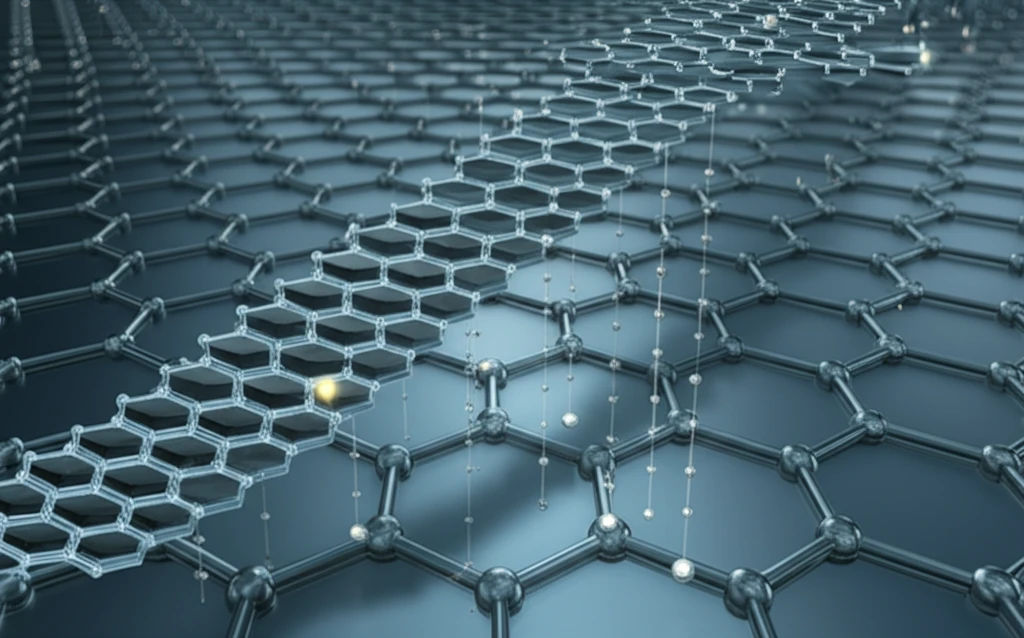
Graphene Nanoribbons: The Staircase to Seamless Electrical Contacts
"Revolutionizing Semiconductor Technology with Atomic Precision"
In the relentless pursuit of more efficient and powerful electronic devices, the quality of electrical contacts is paramount. Traditional metal contacts in low-dimensional semiconductors often introduce unwanted gap states that hinder performance. However, a groundbreaking approach using graphene nanoribbons (GNRs) is set to change the landscape. This method focuses on creating atomically precise heterojunctions, essentially building seamless connections from the atom up.
Imagine a staircase, each step a different width of graphene, smoothly transitioning from one material to another. This is the essence of the new technique, which uses all-carbon staircase contacts to connect to semiconducting graphene nanoribbons. These aren't just any connections; they're crafted with such precision that they eliminate the typical interface issues that plague traditional contacts.
The implications of this research are far-reaching, potentially impacting everything from the speed and efficiency of computers to the sensitivity of sensors. By understanding and harnessing the unique properties of graphene at the nanoscale, scientists are opening doors to a new era of electronic devices.
The Atomic Staircase: How It Works

The core of this innovation lies in the synthesis of coherent heterostructures, which are essentially combinations of GNRs with varying widths. Researchers have successfully created these structures using a surface-assisted self-assembly process, starting with a single molecular precursor. These GNRs consist of 7, 14, 21, and up to 56 carbon atoms across their width, each size offering unique electronic properties.
- Deposition: DBBA molecules are placed on a gold surface.
- Polymerization: Heating to 470K causes the molecules to link.
- Graphitization: Further heating to 670K forms the initial GNRs.
- Conjugation: Annealing at 770K creates the heterojunctions.
The Future of Electronics: A Seamless Transition
The development of seamless electrical contacts using graphene nanoribbon staircases represents a significant leap forward in semiconductor technology. By creating atomically precise connections, scientists are overcoming the limitations of traditional metal contacts and paving the way for more efficient, powerful, and controllable electronic devices. This innovation holds the potential to revolutionize various fields, from computing and sensors to energy storage and beyond.
